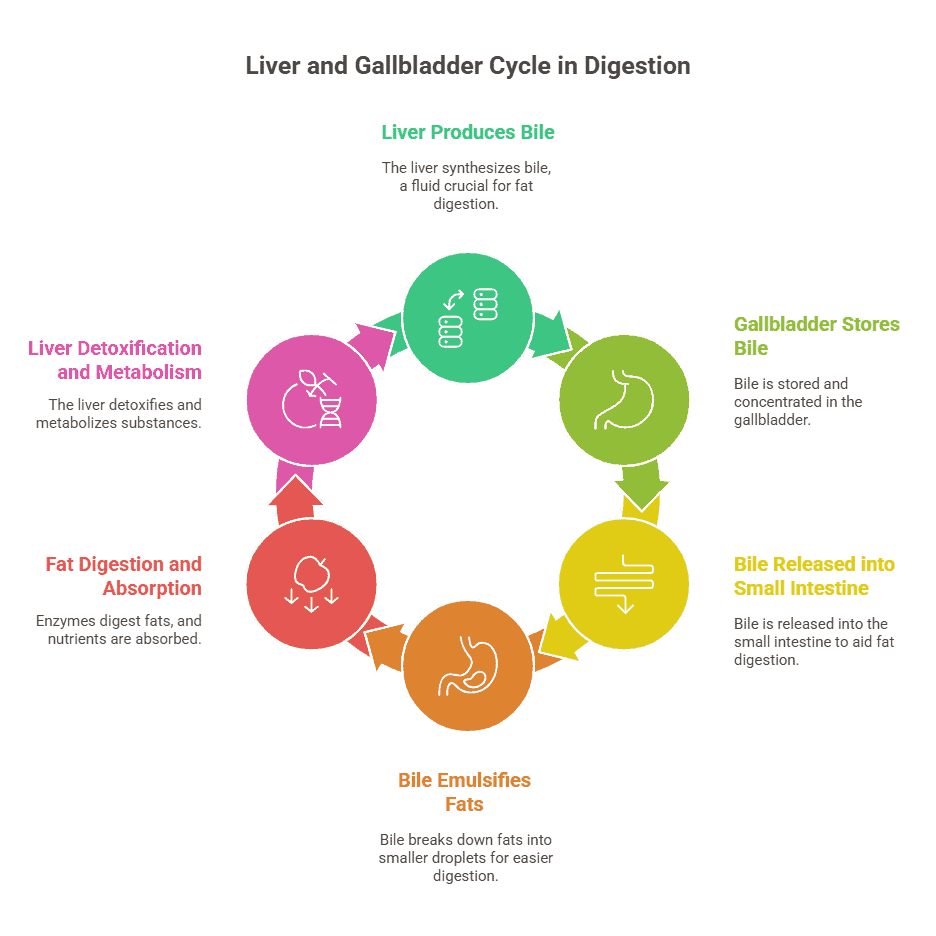When we think of digestion, we often focus on the stomach and intestines. However, the liver and gallbladder also play crucial roles in the process of breaking down food and absorbing nutrients. In this introduction, we will explore the functions of these organs and how they contribute to digestion.
The Liver
The liver is the largest internal organ in the human body and performs a wide range of functions, including aiding in digestion. One of the liver’s main roles in digestion is the production of bile. Bile is a greenish-yellow fluid that is stored in the gallbladder and released into the small intestine to help with the digestion of fats. Bile contains bile salts, which help to emulsify fats and make them easier to digest.
In addition to producing bile, the liver also plays a key role in the metabolism of nutrients. It processes nutrients from the food we eat, such as proteins, carbohydrates, and fats, and converts them into forms that can be used by the body for energy and growth. The liver also detoxifies harmful substances in the blood, such as alcohol and drugs, and helps to regulate blood sugar levels.
The Gallbladder
The gallbladder is a small, pear-shaped organ located underneath the liver. Its primary function is to store and concentrate bile produced by the liver. When we eat a meal that contains fats, the gallbladder contracts and releases bile into the small intestine to aid in the digestion and absorption of fats. Without bile, our bodies would struggle to break down and absorb fats effectively.
The gallbladder plays a crucial role in the digestive process by ensuring that there is a steady supply of bile available to emulsify fats. If the gallbladder is not functioning properly, it can lead to digestive issues such as difficulty digesting fatty foods and nutrient deficiencies.
Summary
In summary, the liver and gallbladder are essential organs that play critical roles in the digestion of food. The liver produces bile, which helps to emulsify fats and aids in the absorption of nutrients. The gallbladder stores and releases bile to ensure that fats are properly digested. Without these organs, our bodies would struggle to break down food and extract the nutrients needed for energy and growth.
Key Takeaways:
- The liver produces bile, which is stored in the gallbladder and released into the small intestine to aid in the digestion and absorption of fats.
- Bile helps to emulsify fats, breaking them down into smaller droplets that can be more easily digested by enzymes.
- The liver also plays a key role in detoxification, metabolism, and nutrient storage.
- The gallbladder stores and concentrates bile produced by the liver, releasing it in response to the presence of fats in the small intestine.
- Issues with the liver or gallbladder can lead to digestive problems, such as difficulty digesting fats or absorbing nutrients.
Key Terms:
- Liver: The largest internal organ in the body, responsible for detoxification, protein synthesis, and the production of bile.
- Gallbladder: A small organ that stores bile produced by the liver and releases it into the small intestine to aid in the digestion of fats.
- Bile: A fluid produced by the liver and stored in the gallbladder that helps to emulsify fats in the small intestine, making them easier to digest.
- Bile Duct: Tubes that carry bile from the liver to the gallbladder and from the gallbladder to the small intestine.
- Bile Salts: Compounds in bile that help to break down fats into smaller molecules that can be absorbed by the body.
- Bilirubin: A waste product produced by the breakdown of red blood cells that is excreted in bile and gives bile its characteristic color.
